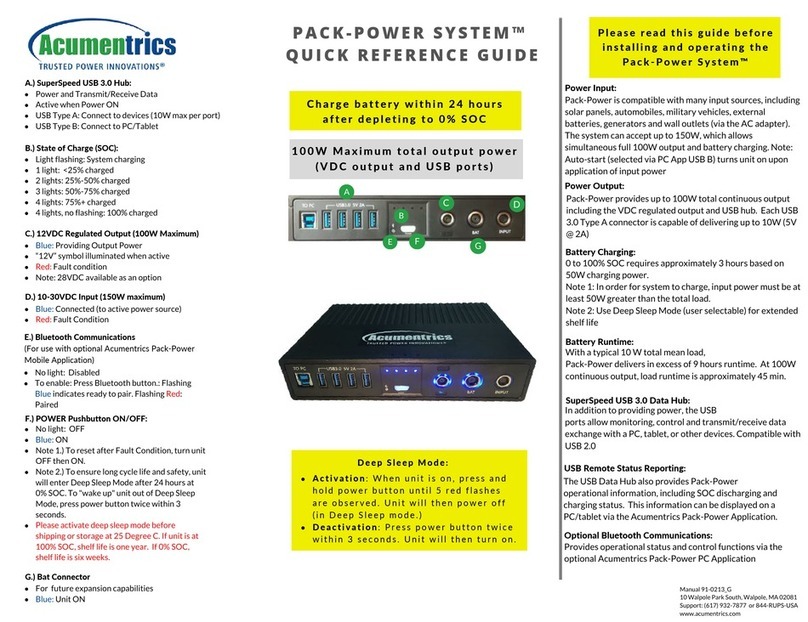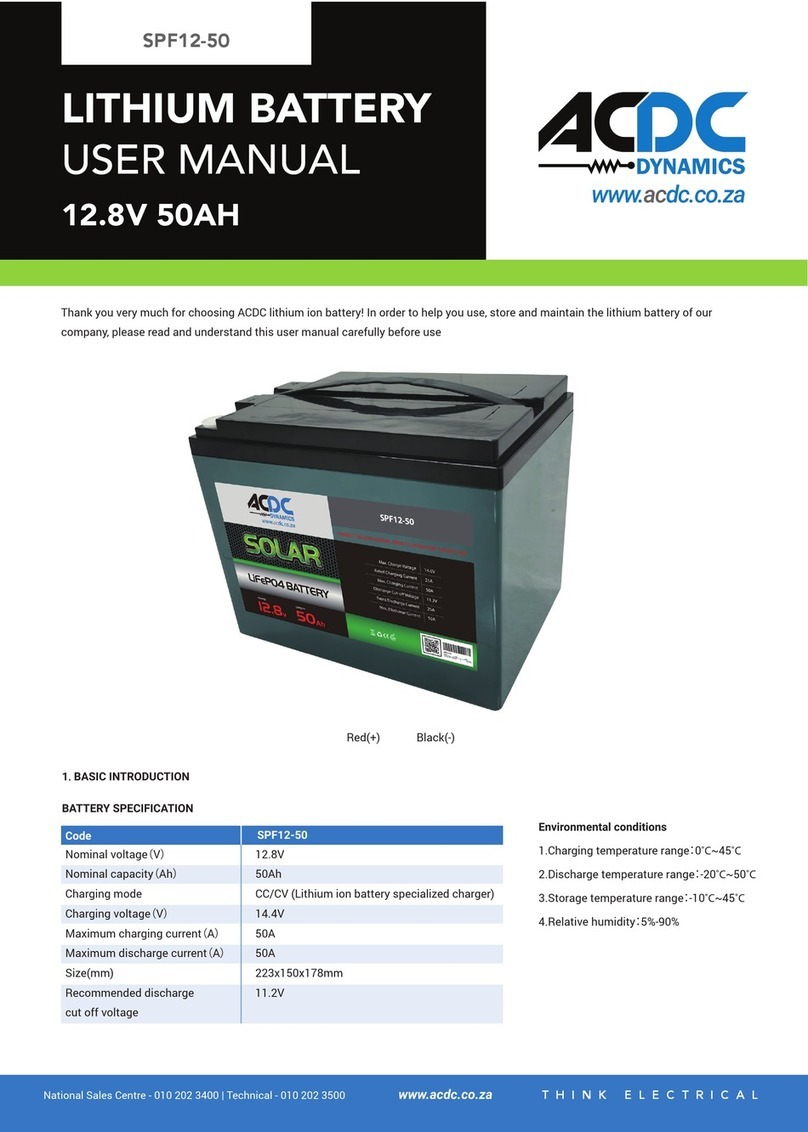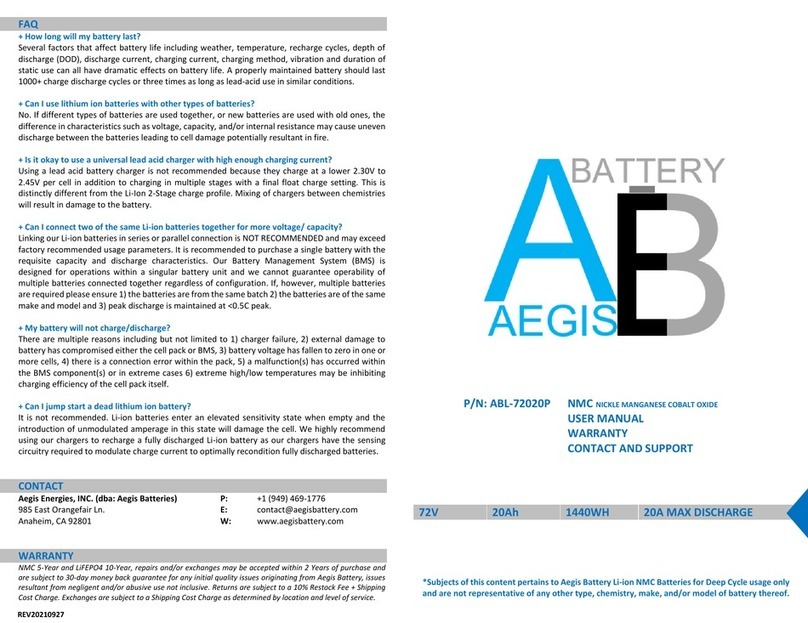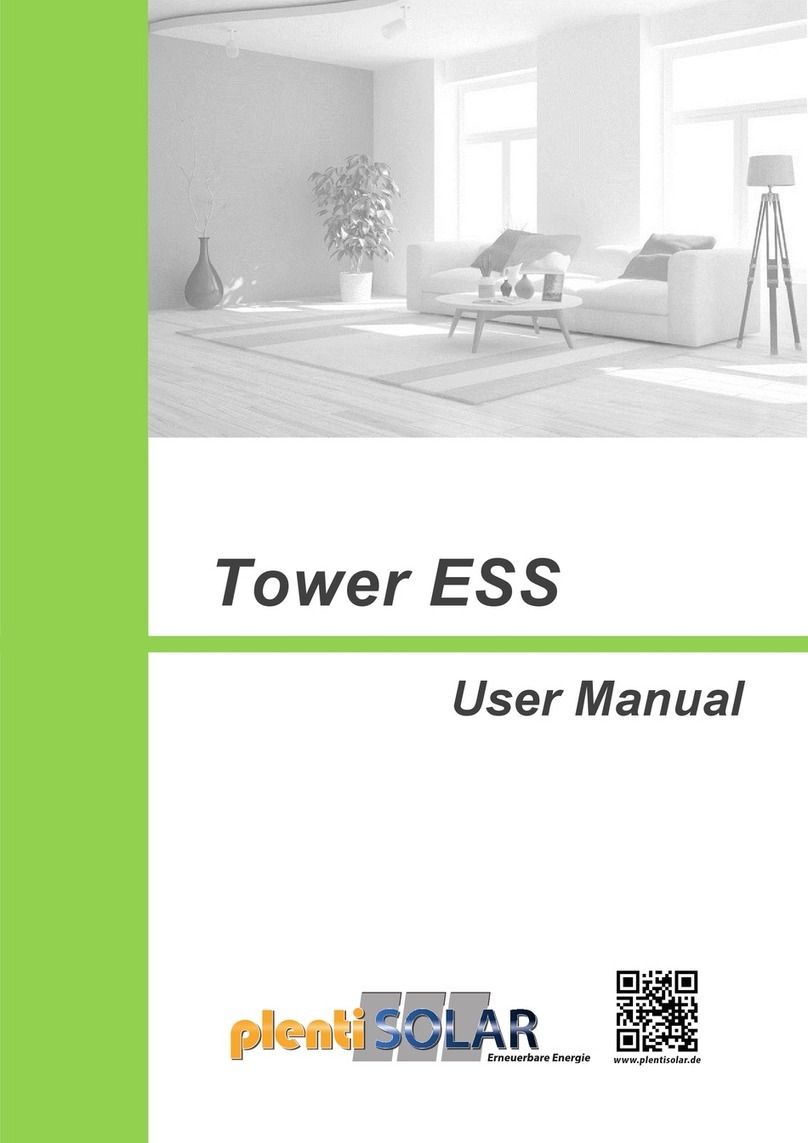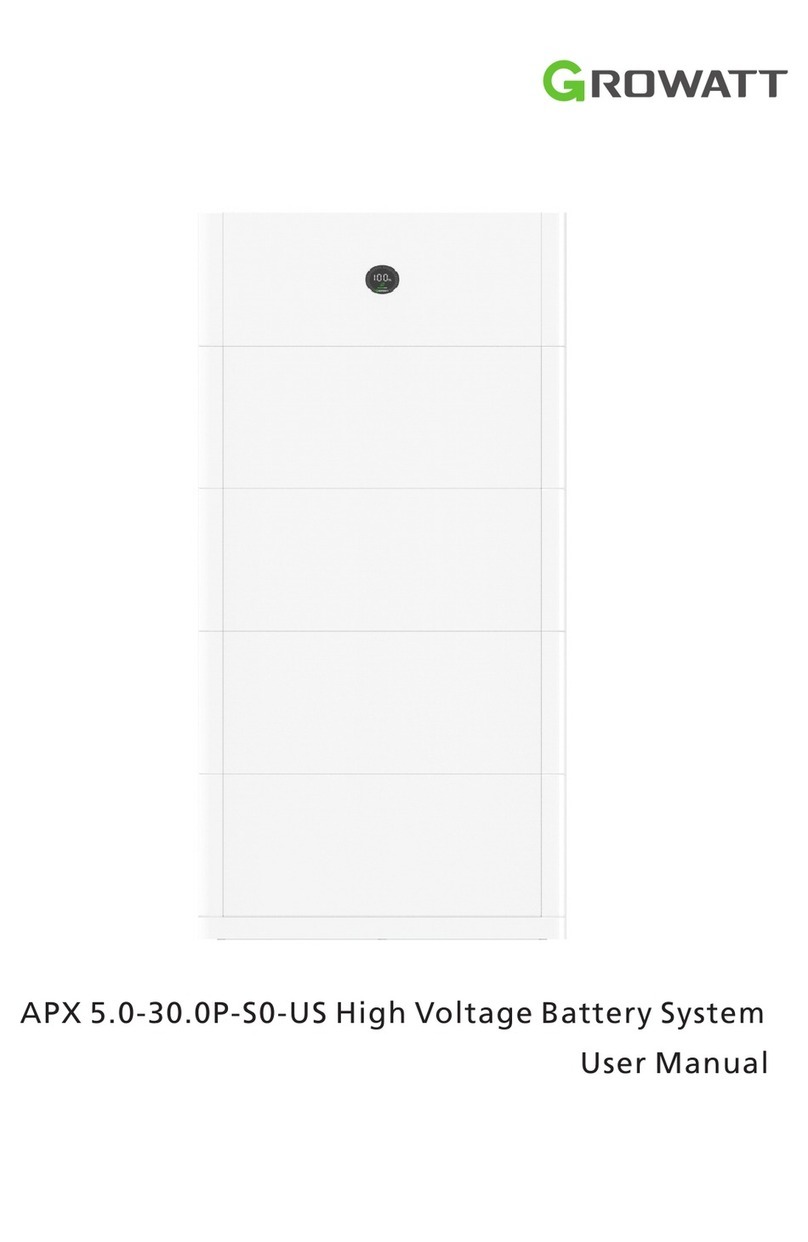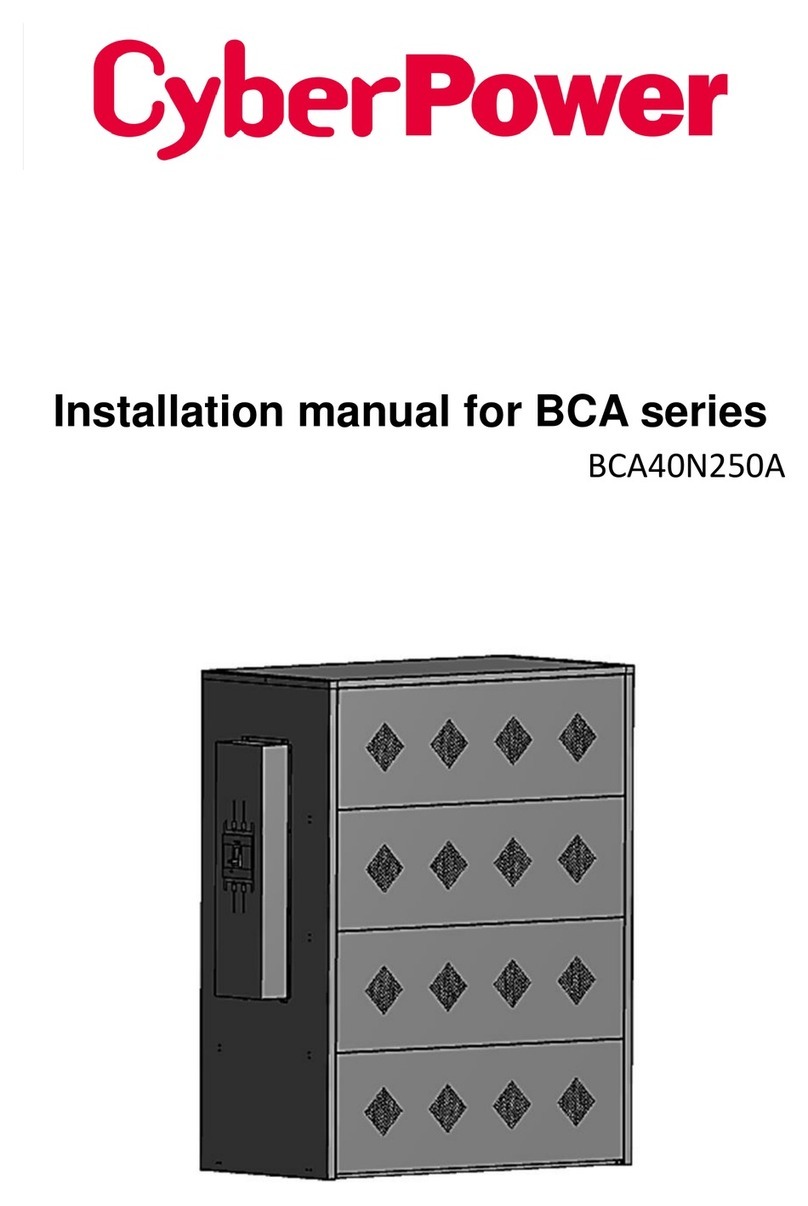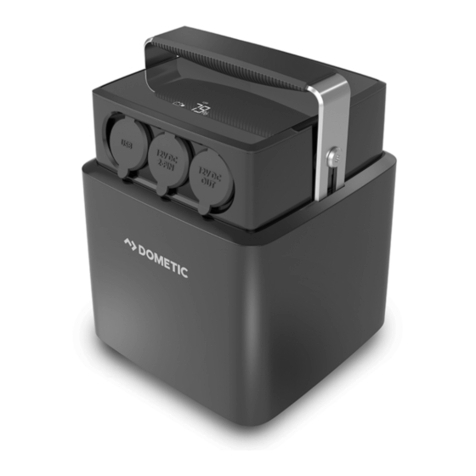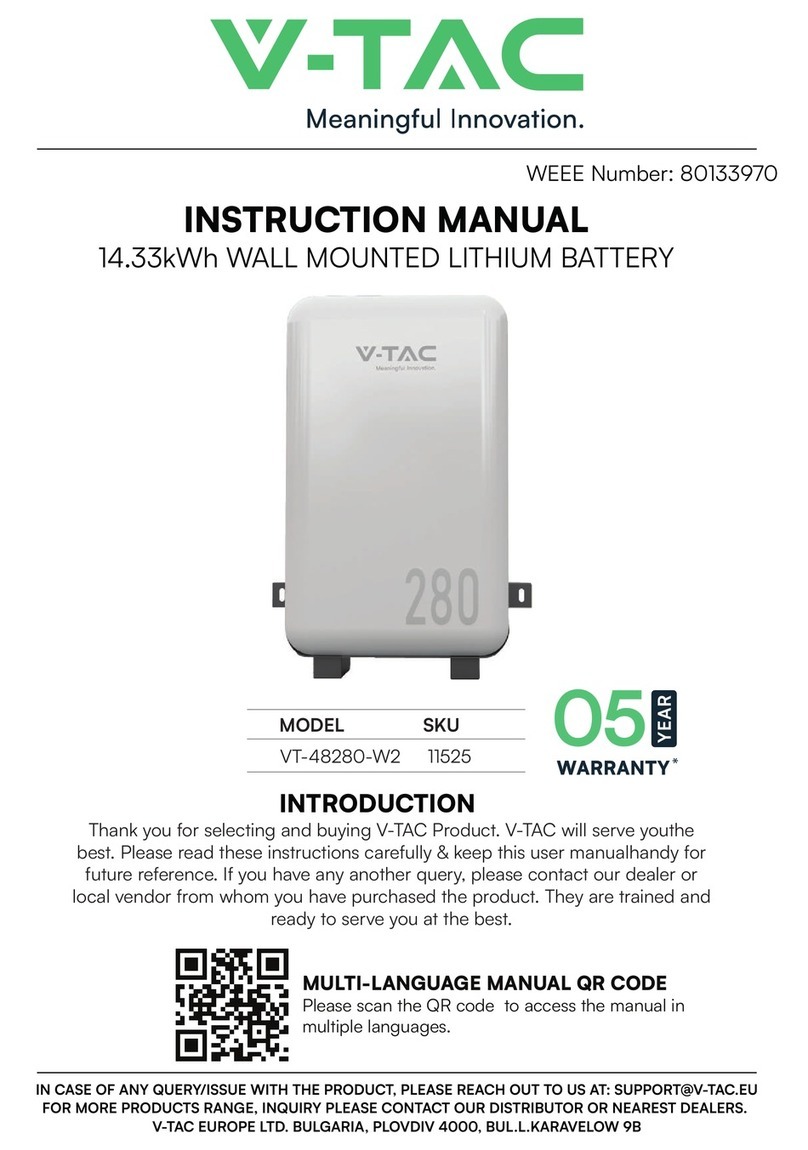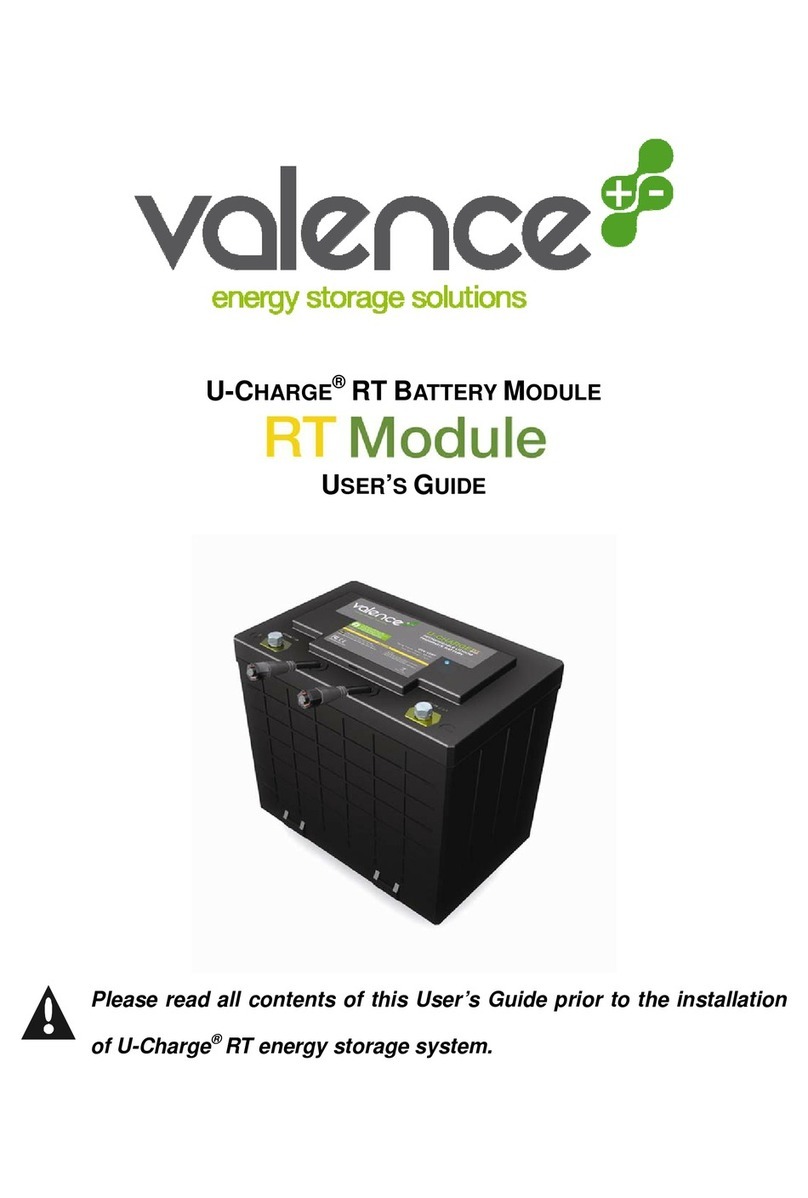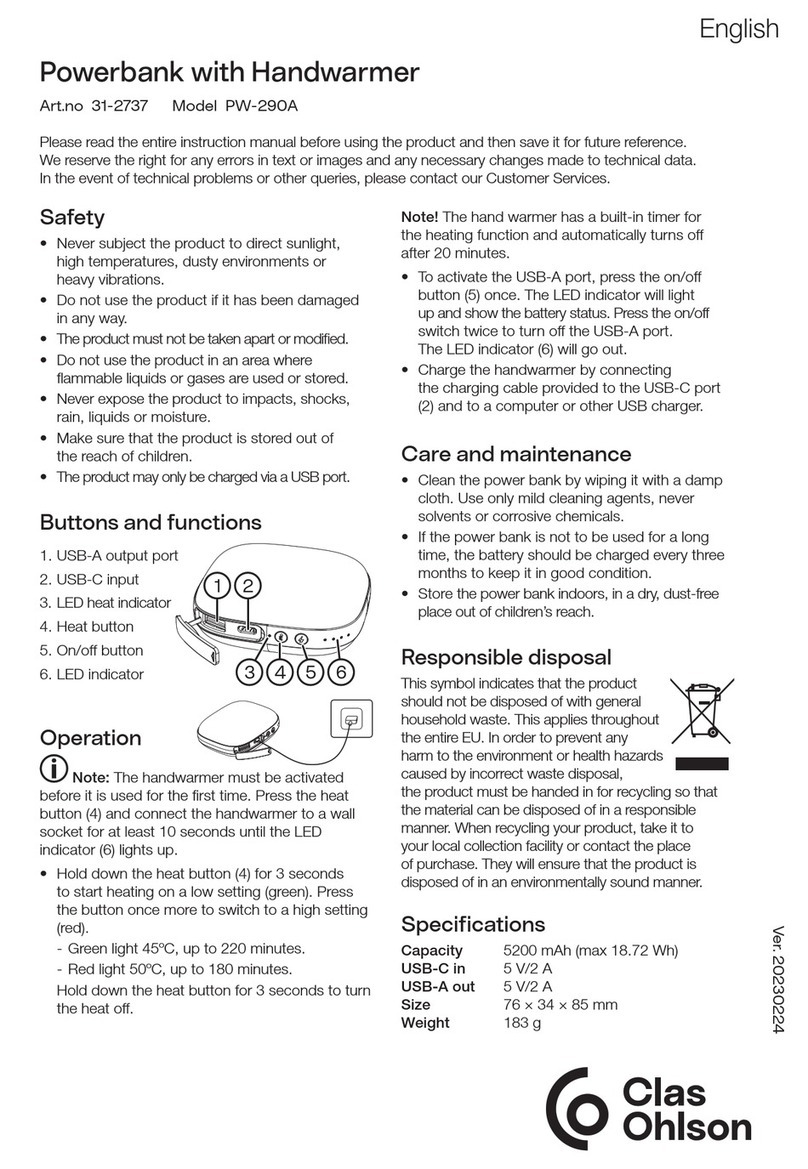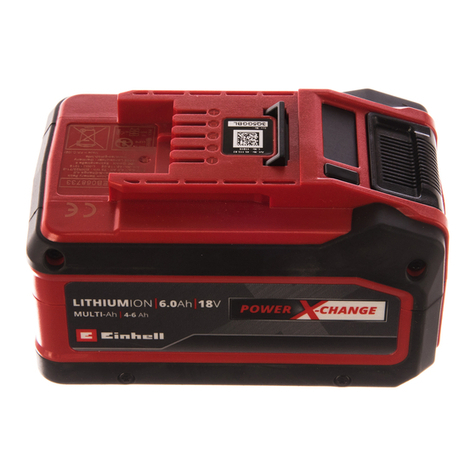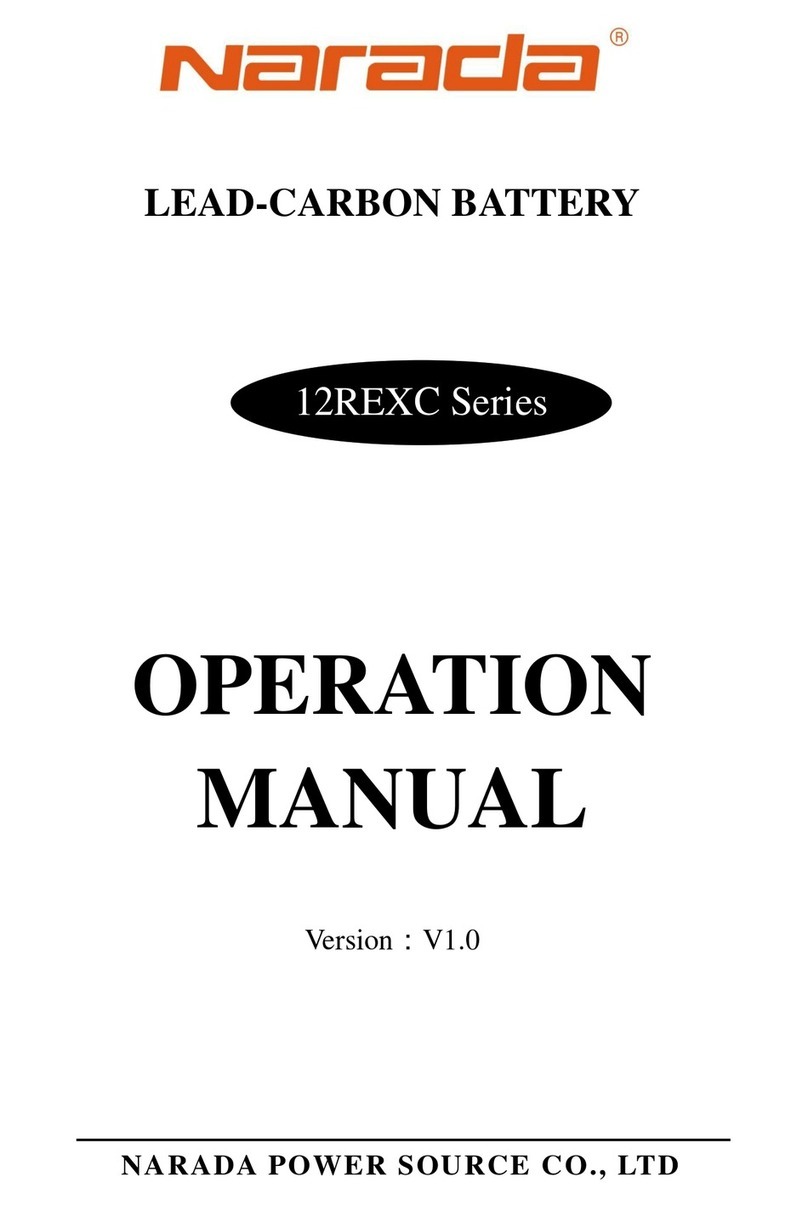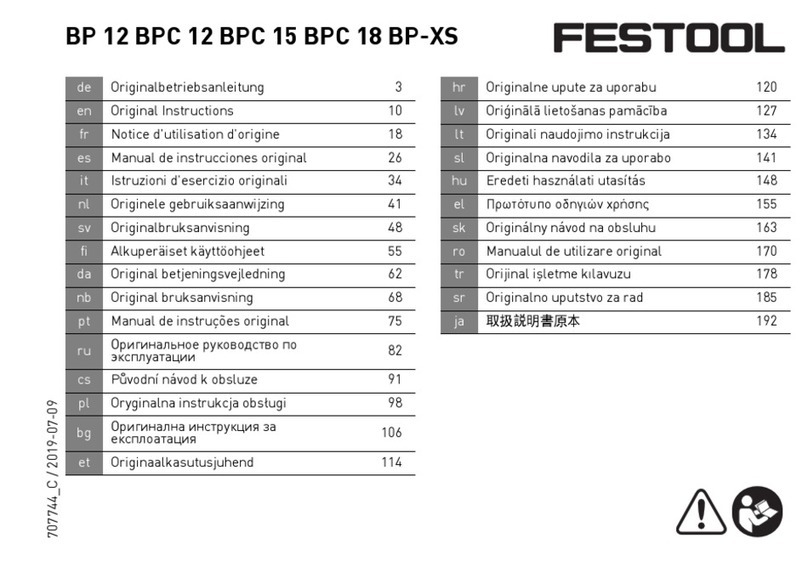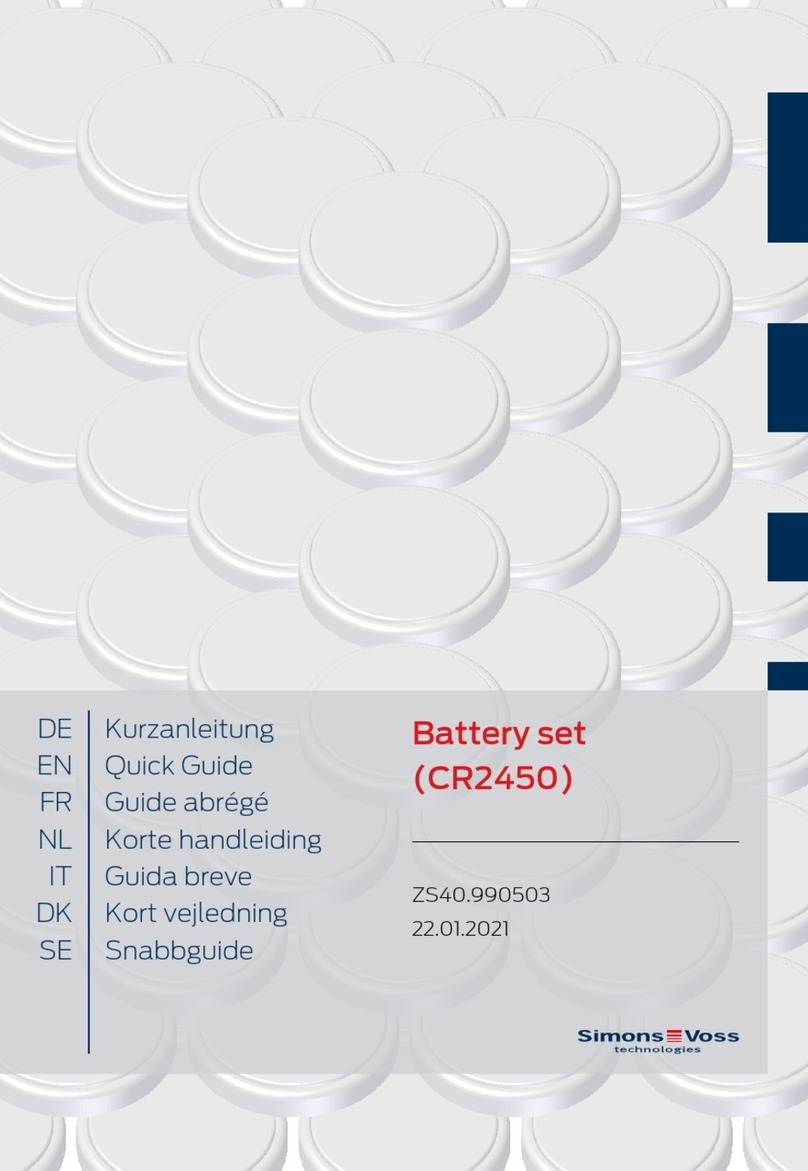CPAP Freedom User manual

USER’S MANUAL
Batteries to Power Your World!
FREEDOMTM CPAP BATTERY USER’S MANUAL
FEBRUARY 2017
1-877-445-5228
www.batterypowersolutions.net

Table of Contents
Package Contents..........................................................................
Connection Components Sold Separately...................................
Product Specifications..................................................................
Safety Features.........................................................................
Charge Time..............................................................................
Life Span....................................................................................
Warranty....................................................................................
Intended Use..................................................................................
Compatibility..................................................................................
Average Run Times........................................................................
Getting Started
Initial Battery Usage.................................................................
Turning the Battery On/Off.......................................................
The Control Board.....................................................................
Charging the Battery.....................................................................
Charging in a Foreign Country...................................................
Single Battery Charging............................................................
Dual Battery Charging..............................................................
Other Charging Options................................................................
Auto Charge Cable....................................................................
150W Sine Wave Power Inverter...............................................
SunPower 40W Solar Panel.......................................................
1
1
2
2
2
2
2
3
3
4
5
5
5
6
6
6
7
8
8
8
8
Safety Warnings
The following safety warnings must be observed at all times:
Do not drop, hit, crush, or otherwise abuse the battery as this
may result in the exposure of the cell contents, which are corrosive.
Do not expose the battery to rain or moisture of any type.
Do not expose the battery to fire, incineration or other extreme
heat. Exposure to extreme heat may result in a hazardous reaction.
Do not charge the battery on any flammable surface.
Do not disassemble the battery (remove the cover) or attempt to
repair the battery as there are no user-serviceable parts inside.
Periodically inspect connection cords, connector tips and the power
supply for damage or signs of wear. Discontinue use if damaged.
By purchasing, using or possessing any of Battery Power Solutions’
products, you are agreeing to hold harmless Battery Power Solutions, it’s
subsidiaries, affiliates, owners, officers and employees from any and all
claims or liability for any damage to any property or injury, illness or death
of any person when such damage, injury, illness or death shall be caused
in whole or in part from use of the product(s).
Usage Disclaimer
Lithium-ion batteries should be recycled. Some states have specific laws
regarding the disposal of lithium-ion batteries.
For information on laws in your state and where you
can recycle your batteries at no cost, visit
www.call2recycle.org or call 1-877-723-1297.
Battery Disposal
36

Table of Contents
Powering Your PAP Device
Respironics DreamStation Series..............................................
Respironics System One & M Series........................................
ResMed Air 10 & S9 Series.......................................................
ResMed S8 Series......................................................................
DeVilbiss IntelliPAP Series........................................................
Somnetics Transcend Series......................................................
HDM Z1 Series..........................................................................
Other PAP Devices....................................................................
Air Travel Usage.............................................................................
Power Backup Usage.....................................................................
Single Battery Connection.........................................................
Dual Battery Connection...........................................................
Powering Other Devices...............................................................
USB Port Connection.................................................................
DC Input Cord Connection.........................................................
150W Sine Wave Inverter Connection......................................
Battery Care Instructions.............................................................
Battery Storage.............................................................................
FAQ/Troubleshooting....................................................................
Safety Warnings.............................................................................
Usage Disclaimer............................................................................
Battery Disposal.............................................................................
9-10
11-12
13-15
16-17
18-19
20-21
22-23
24-25
26
26
27-28
29-30
31
31
32
32
33
33
34-35
36
36
36
FAQ | Troubleshooting
BATTERY STARTS THEN STOPS WORKS
If the battery stops functioning press the charge level indicator button to
reset the batteries’ internal circuitry. If the battery continues to shut down,
the device you are attempting to power may not be compatible.
The device may have higher amperage requirements (over 8A) than
the battery can provide.
The device may require a constant voltage output to operate properly.
The FreedomTM CPAP battery has a voltage range of 9V-12.6V DC and
does not maintain a constant voltage level.
The internal circuitry of the device may be set to automatically adjust
to accommodate for multi-voltage capabilities which could make it
compatible with the battery at times and incompatible at other times.
DUAL BATTERY CONFIGURATION
While both batteries are providing output power simultaneously the battery
with the highest charge level will generally be the one to display “DC
12V” under the battery symbol on the digital display screen.
Also note that due to the circuit board differences a Freedom™ CPAP Battery
cannot be pigtailed with an older model C-100 CPAP Battery.
USB PORT CONNECTION
When connecting a device to the USB port you must press the charge level
indicator button once to initiate output power from the battery. See page
27 for connection instructions.
PAP DEVICE CONNECTION VIA A 12V DC POWER CORD
While you can connect a PAP device to the battery using a manufacturer’s
12V DC power cord and the DC input cord included with the battery kit it
may only power the PAP device for a short period of time. This occurs
because these types of DC power cords typically require a constant 12V
power flow in order to work properly and the Freedom™ battery functions
on a voltage range. Therefore, 12V DC power cords are not a viable option
for connecting a PAP device to the Freedom™ battery.
35

The FreedomTM CPAP Battery Kit comes with the items listed below.
The following items are required to connect certain PAP devices to the
Freedom™ battery. These items are typically packaged separately and are
not included in the FreedomTM CPAP Battery Kit box.
FREEDOMTM CPAP BATTERY AC POWER SUPPLY DC POWER PIGTAIL CORD
CONNECTOR TIPS (3) DC INPUT CORD
1
RESMED
24V POWER CONVERTER
{ITEM #: BPS C-24V-RES}
DREAMSTATION
12V POWER ADAPTER
{ITEM #: BPS C-12V-DS}
150W SINE WAVE
POWER INVERTER
{ITEM #: BPS INVERTER}
Required for ResMed
Air 10 and S9 devices.
Required for Respironics
DreamStation devices.
Required for most all
other PAP device models.
Package Contents
Connection Components Sold Separately
34
FAQ | Troubleshooting
Below are the most common questions/issues regarding use of the
FreedomTM CPAP Battery. If you have additional questions please contact
LOWER THAN EXPECTED RUN TIMES
Several factors can impact how long the battery will power a PAP device.
Below are the most common of these factors:
The use of heated humidification or heated tubing will reduce run times
by two thirds in most cases and in some cases could prevent the battery
from being able to power the PAP device. You should disconnect the
humidifier or completely turn it off and use non-heated tubing to obtain
optimal battery performance.
If humidification is required, try lowering the humidification setting as
many people can lower their heat setting and still achieve the desired
result. If lowering the setting does not produce enough of an increase
in run time you can use the battery in the dual battery configuration
to increase the run time.
Very high pressure settings (above 18 cm/H2O) can impact run times
especially when other factors are present. All average run time testing
is done on a pressure setting of 10 cm/H2O.
Leaking masks can impact run times as the PAP device will be working
harder to maintain the prescribed pressure setting and thus be drawing
more power from the battery.
BiLevel devices will have lower run times as the pressure setting is
not constant and changes throughout the night requiring more power
to operate the device.
Some older obsolete PAP device models and newer targeted ventilation
PAP devices require a much higher power draw than today’s standard
CPAP devices and therefore can result in lower run times or could
prevent the battery from being able to power the device.
The device-specific connection components required for some PAP
device models do draw power from the battery but this has been
factored into the listed average run times.
NOTE: The included DC power pigtail cord and connector tips included in
the battery kit are compatible with Respironics System One, Respironics M
series and DeVilbiss IntelliPAP 1 series devices. All other PAP device makes
and models will require an additional connection component (see below).
{Letters: N, W, J}

2
Cell Type: Industrial grade rechargeable lithium-ion
Capacity: 97.68 Wh
Output Voltage Range: 9V-12.6V DC
USB Output Voltage: 5V DC, 2A
Output Current: 8A maximum
Power Gauge: Digital display charge level indicator
Size: 7.5” x 4.8” x 0.8” (L x W x H)
Weight: 1.7 lbs
SAFETY FEATURES
Protective Circuit Board (PCB) provides internal protection against
thermal runaway (overheating), over charging, over discharging,
over voltage, over current, and short circuiting.
Aluminum alloy shell provides maximum cell protection and durability.
The FreedomTM CPAP Battery has been UN 38.3 tested and meets
all current safety regulations and shipping requirements.
CHARGE TIME
The FreedomTM CPAP Battery can be charged in approximately 4 hours
(per battery) when fully discharged. The battery does not need to be fully
discharged before charging. Do not charge on any flammable surface.
LIFE SPAN
Under normal conditions the average life span of the FreedomTM CPAP
Battery is generally around 400-500 charge/discharge cycles. The amount
of charge the battery will hold will gradually decrease due to usage and
aging. This decrease in charge capacity is true for all rechargeable lithium-
ion batteries. See page 33 for more information.
WARRANTY
The FreedomTM CPAP Battery, all components and accessories are under
warranty for manufacturing and quality defects for one (1) year.
Product Specifications
33
Understanding common phenomenon with rechargeable lithium-ion
batteries can help you better care for your FreedomTM CPAP Battery and
answer many common questions regarding usage.
Lithium-ion batteries do not suffer from the memory effects that are
associated with other types of battery chemistries. This means that
the battery does not need to be completely discharged before charging.
Upon initial use or after a prolonged storage period lithium-ion
batteries may require 3-4 charge/discharge cycles before achieving
their maximum capacity.
Lithium-ion batteries will self-discharge when unused; therefore,
the battery will need to be charged after a storage period. On average
the battery will self-discharge by 20% every 30 days.
The amount of charge lithium-ion batteries will hold will gradually
decrease due to usage and aging. Over time, the actual battery capacity
decreases as less and less active material within each lithium-ion cell
is available to electrochemically store a charge. This loss in capacity
(aging) is true for all rechargeable lithium-ion batteries.
It is normal for a lithium-ion battery and its AC power supply to
become slightly warm to the touch during charging and discharging.
Do not charge the battery on any flammable surface.
Battery Care Instructions
Fully charge the battery before storage.
Store the battery in a dry, cool place away from extreme heat, direct
sunlight and metal objects.
If the battery is being stored for long periods of time we recommend
charging the battery to 50% of capacity at least once every 90 days.
Battery Storage
Table of contents
